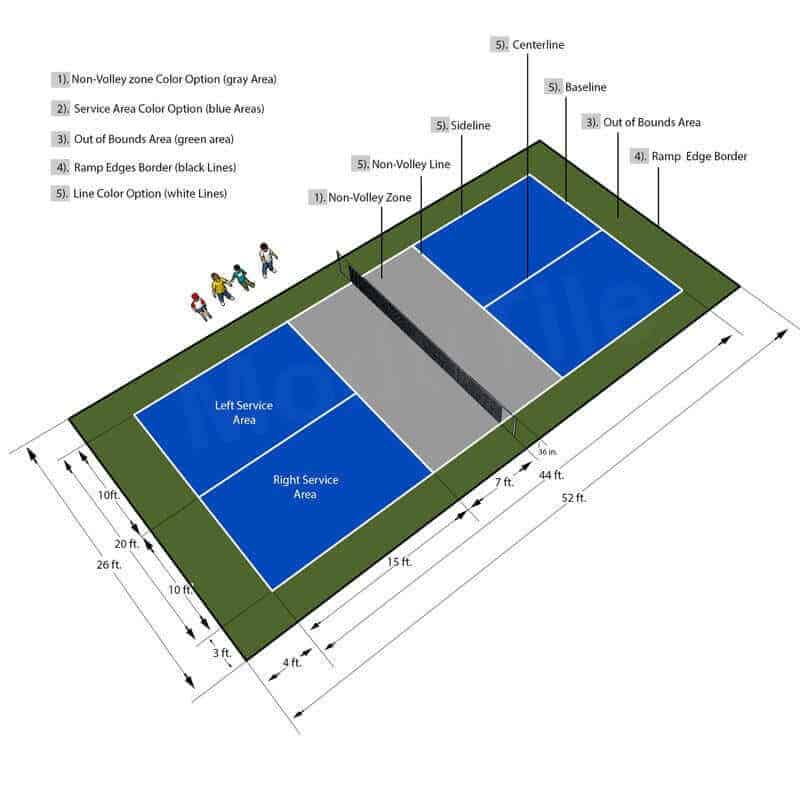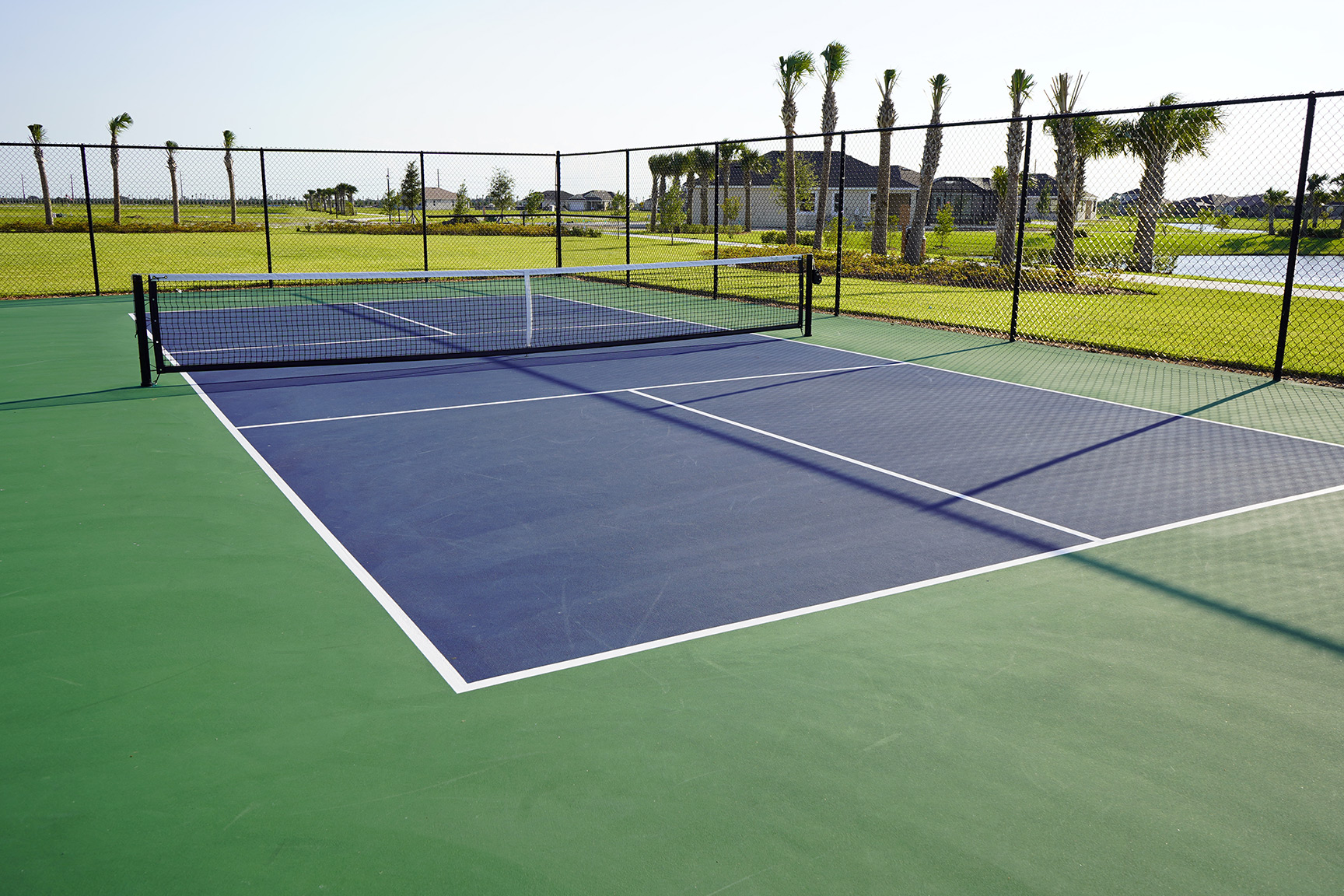Navigating Rules for Pickleball Court Construction in Your Area
Creating a pickleball court in your area requires a nuanced understanding of numerous regional laws, including zoning legislations, structure permits, and safety requirements. Each community enforces specific standards that can significantly affect the expediency of your project. Involving with regional authorities and the community is important for making certain compliance and promoting support. Navigating this governing landscape can be complex and taxing. What are the essential steps you should take into consideration to stay clear of prospective risks and make sure a smooth building process?
Comprehending Neighborhood Zoning Regulations
When taking into consideration the building of a pickleball court, understanding neighborhood zoning legislations is essential to making sure compliance and avoiding prospective lawful issues. Zoning regulations determine just how land can be made use of and commonly consist of specs pertaining to leisure centers. These laws can vary significantly by community, impacting elements such as court placement, sound, size, and lights levels.
Before starting building and construction, it is important to speak with the neighborhood zoning board or preparation department to identify the certain laws that use to your building. Specific zones might restrict entertainment tasks, while others may call for certain licenses or adherence to certain standards. It is likewise vital to take into consideration problems, which establish just how far frameworks have to be from home lines or other buildings.
In addition, private advancements, such as property owner associations (HOAs), may enforce their own guidelines relating to the building and construction and use pickleball courts. Comprehending these regulations can stop pricey alterations or litigation down the line. Involving with neighborhood stakeholders and area members can give valuable insights and foster assistance for your project, guaranteeing that it lines up with the neighborhood's needs and assumptions.
Getting Necessary Structure Allows
Exactly how does one browse the complexities of acquiring necessary structure authorizations for a pickleball court? The process starts with comprehending local guidelines and needs stated by metropolitan authorities. Usually, you will certainly require to send a comprehensive website plan that outlines the suggested court measurements, materials, and format. This plan needs to follow zoning laws and any type of particular guidelines relating to recreational facilities.

Once authorizations are gotten, it is important to adhere to any examination routines and demands throughout the building and construction phase. Keeping interaction with local authorities will promote a smoother authorization process and aid stay clear of prospective problems. By completely preparing and recognizing the allowing landscape, you can successfully browse the complexities associated with constructing a pickleball court while continuing to be certified with all regional laws.

Assessing Environmental Influence
When planning the construction of a pickleball court,A detailed analysis of environmental impact is important (Pickleball court construction). This examination helps recognize possible effects on regional ecological communities, water resources, and area appearances. Trick variables to think about include site selection-- guaranteeing that the court is not constructed on ecologically delicate land, such as marshes or environments for endangered varieties
Soil stability and water drainage patterns should be analyzed to stop disintegration and water pooling, which might negatively impact bordering plants and wild animals. Furthermore, the option of products is critical; going with eco-friendly and lasting choices decreases ecological harm.
The execution of efficient stormwater monitoring techniques is an additional essential facet, as it helps alleviate drainage and sedimentation. Involving with regional ecological companies can provide important understandings right into regulations and finest techniques specific to your location.
Finally, neighborhood input can be beneficial in recognizing any local ecological worries and promoting support for the job. By performing a thorough ecological impact analysis, stakeholders can make certain that pickleball court building and construction aligns with sustainable techniques and adds positively to the area's eco-friendly wellness.
Abiding By Safety Specifications
Making sure compliance with safety and security criteria is crucial for the successful building and operation of a pickleball court. Sticking to well-known safety and security policies decreases the risk of mishaps and injuries, ensuring a protected setting for gamers.
Secret security criteria include proper court dimensions, surface area materials, and lights demands. The court should meet the official dimensions of 20 feet wide by 44 feet long for doubles play, with appropriate buffer zones to stop injuries from errant rounds. Pickleball court construction. The surface ought to be created from non-slip products to improve traction and decrease the chance of drops
Additionally, lights has to suffice for evening play, supplying consistent lighting to prevent shadows that can impede exposure. Local building ordinance might also dictate details needs for secure fencing and internet elevation to make certain gamer safety and prevent unapproved access to the court location.
Normal evaluations and maintenance are necessary to support these requirements with time. By focusing on safety and security compliance, court owners not only safeguard gamers yet also promote a positive reputation within the neighborhood. This dedication to security can encourage higher participation and pleasure of the sport, ultimately adding to its development and sustainability.

Involving the Area in Preparation
Area participation in the drawing board of pickleball court construction can considerably enhance the project's total success. Engaging regional homeowners and stakeholders promotes a feeling of ownership and motivates collective decision-making, which can lead to wider support for the campaign.
To efficiently include the neighborhood, coordinators must initiate public meetings or workshops, providing a system for homeowners to articulate their opinions and preferences regarding place, style, and facilities. Surveys and comments kinds can likewise be used to gather insights from a broader audience, making sure that varied point of views are considered.
Furthermore, forming a neighborhood board of advisers can help with recurring conversations and address concerns throughout the preparation procedure. This board can include reps from different demographics, such as local schools, leisure companies, and community associations, therefore amplifying community depiction.
Efficient interaction is essential; updates concerning the task need to be on a regular Continue basis shared via newsletters, social networks, or look at these guys regional bulletins. By focusing on neighborhood involvement, organizers can grow interest, reduce potential resistance, and develop a pickleball facility that absolutely resonates with regional values and demands. This collective strategy not only enriches the project but also reinforces area connections.
Verdict
To conclude, navigating the intricacies of pickleball court building requires an extensive understanding of regional guidelines, including zoning regulations, structure authorizations, and safety and security criteria. Carrying out ecological assessments is vital to minimize environmental influence, while area engagement can enhance support for such projects. By sticking to these standards and promoting partnership, effective execution of pickleball courts can be attained, advertising recreational possibilities and area wellness. Continued persistance in these locations will ensure sustainable and compliant development.
Creating a pickleball court in your location requires a nuanced understanding of different neighborhood laws, including zoning legislations, structure licenses, and safety criteria.When taking into consideration the construction of a pickleball court, comprehending neighborhood zoning regulations is critical to guaranteeing compliance and preventing potential lawful problems. By completely preparing and understanding the permitting landscape, you can effectively browse the complexities included in building a pickleball court while staying compliant with all regional policies.
In conclusion, navigating the intricacies of pickleball court construction requires a detailed understanding of neighborhood regulations, including zoning laws, building permits, and security requirements. By sticking to these standards and promoting collaboration, effective application of pickleball courts can be accomplished, advertising more information leisure possibilities and neighborhood well-being.